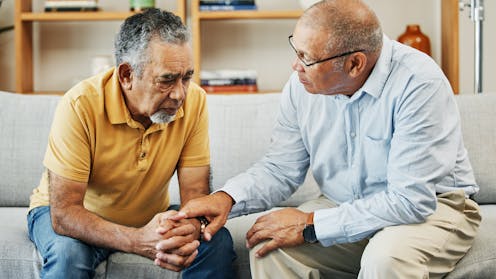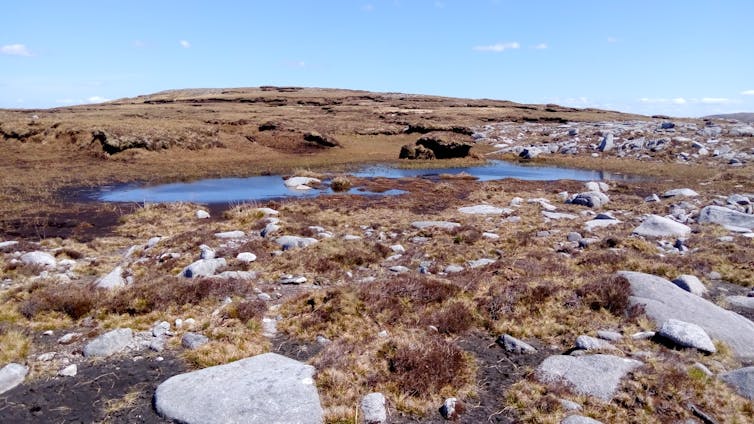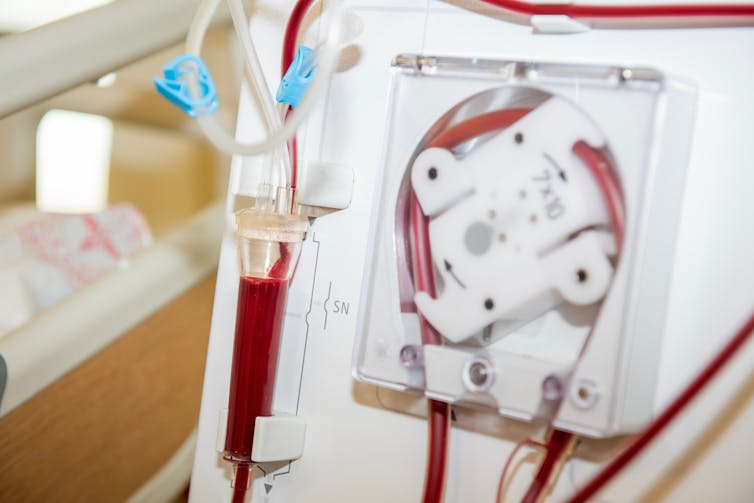Source: The Conversation – (in Spanish) – By Paula Costa Correa, Investigadora del área de Filosofía del Derecho. Abogada especializada en Migraciones y Derecho Penal, Universidad de Navarra

Mientras algunos medios y discursos políticos describen la migración como una amenaza o una “avalancha”, los datos muestran lo contrario: España no vive una invasión, sino una relación de interdependencia funcional con los países del Sur Global. En otras palabras, lo que se presenta como un problema es, en realidad, una necesidad estructural. El país necesita población migrante para sostener su pirámide demográfica, su economía y su sistema de bienestar.
Esta simbiosis migratoria no es una metáfora. Es una realidad demográfica. Desde 1950, la población mundial se ha triplicado. En regiones como África Subsahariana o Asia Meridional, el crecimiento es constante y sostenido, ejerciendo presión sobre recursos, empleo y sistemas sociales. En cambio, Europa y América del Norte enfrentan el fenómeno contrario: envejecimiento poblacional, bajas tasas de fecundidad y reducción progresiva de la población activa.
En el caso español, el contraste es claro. La tasa de fecundidad se sitúa desde hace años por debajo de 1,3 hijos por mujer, muy lejos del umbral de reemplazo generacional (2,1). Sin flujos migratorios constantes, España perdería millones de habitantes en las próximas décadas, con efectos directos sobre el sistema fiscal, las pensiones y el empleo. Según proyecciones del INE y de Naciones Unidas, de mantenerse la fecundidad actual sin migración, la población podría descender hasta 30 millones en 2100, frente a los 47 millones actuales.
En todos estos escenarios debemos tener en cuenta que los bebés que nacen hoy no empezarían a cotizar hasta 2045. Es decir, apostar por una fecundidad de tres hijos por mujer supondría un esfuerzo económico adicional para el estado de bienestar durante al menos dos décadas, antes de que esas nuevas generaciones pudieran sostener el sistema.
Ni la natalidad basta, ni la migración sobra
Ante este panorama, ¿puede la natalidad compensar por sí sola el déficit demográfico? La respuesta es negativa. Hemos modelado tres escenarios de política natalista, y todos presentan limitaciones estructurales.
En el mejor de los casos –con políticas públicas sostenidas durante 20 años– no habría ningún impacto real antes de 2045. En escenarios más intensivos (como aumentar a tres o cuatro hijos por mujer en una legislatura), los resultados son ineficaces, fiscalmente insostenibles y socialmente inviables. No se puede compensar un problema estructural con medidas de corto plazo ni con presión sobre los cuerpos de las mujeres.
En cambio, la migración sí tiene efectos inmediatos. La llegada de personas jóvenes en edad de trabajar ha contribuido en las últimas décadas a equilibrar la relación entre cotizantes y jubilados. Un estudio estima que sin migración el indicador de sostenibilidad demográfica –que mide cuántas personas en edad de trabajar hay por cada persona mayor de 65 años– habría sido un 30 % inferior, agravando aún más la presión sobre el sistema de pensiones. Esto significa que la presión sobre dicho sistema de pensiones habría sido mucho mayor con menos trabajadores sosteniéndolo.
Lejos de ser una amenaza, la migración ha contribuido a mantener el equilibrio entre cotizantes y jubilados, retrasando un colapso que, de otro modo, ya estaría en marcha.
Pero la función de la migración no es solo económica. La movilidad humana cumple un rol redistributivo a nivel global: traslada población activa desde regiones con exceso de presión demográfica hacia otras con escasez de mano de obra y envejecimiento. Esta relación de interdependencia –aunque desigual– permite mantener en funcionamiento sectores esenciales como los cuidados, la agricultura o la hostelería. Negar esta realidad por motivos ideológicos no cambia los hechos: solo impide gestionarla de forma realista, con planificación y justicia.
Ni milagro ni amenaza
En paralelo, el envejecimiento plantea retos adicionales. Menos trabajadores significa menos cotizaciones, pero también más gasto sanitario, más dependencia y más personas mayores viviendo solas. En España, la esperanza de vida ha aumentado y la feminización de la vejez introduce nuevas desigualdades: muchas mujeres mayores carecen de pensión propia o dependen de redes familiares cada vez más frágiles.
Las proyecciones muestran que sin una política migratoria sostenida, el sistema de bienestar español se enfrentará a una presión insostenible. Los discursos que rechazan la migración apelan al mito de la autosuficiencia nacional, pero ese modelo nunca ha existido. Desde los años 2000, el crecimiento español ha estado directamente vinculado al trabajo y las contribuciones de millones de personas migrantes.
Esto no significa que la migración sea una solución mágica. También necesita planificación, integración y derechos. Pero sí constituye un componente esencial de cualquier estrategia demográfica realista. De hecho, países como Canadá o Alemania ya aplican políticas activas para atraer y retener población extranjera cualificada y no cualificada. España, sin embargo, sigue atrapada en una narrativa de emergencia, inseguridad y control.
Por eso, debemos dejar de ver a España solo como puerta de entrada de migración hacia Europa, y empezar a entender su posición como una oportunidad estratégica: atraer talento, corregir desequilibrios y rejuvenecer el tejido social. Seguir anclados en el miedo y la mentira emotiva no solo perjudica a las personas migrantes, sino que priva al país de una herramienta imprescindible para su sostenibilidad.
La simbiosis migratoria entre Norte y Sur es una realidad del siglo XXI. Negarla no elimina el problema, solo impide encontrar soluciones eficaces.
![]()
Paula Costa Correa es presidenta de la Asociación de Migración y Derechos Humanos de Navarra (MIGENE), un observatorio independiente sobre la situación migratoria en España y sus implicaciones sociales y jurídicas.
– ref. ¿Qué pasaría en España si mañana desapareciera la inmigración? – https://theconversation.com/que-pasaria-en-espana-si-manana-desapareciera-la-inmigracion-259355











